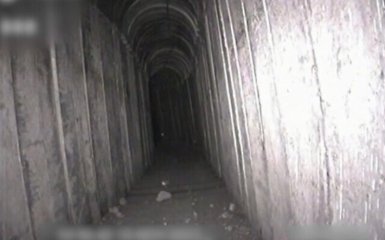80% of the vast network of Hamas tunnels under the Gaza Strip are still functioning after weeks of Israeli efforts to destroy them. This hinders the achievement of Israel's main goals in the war.
How many Hamas tunnels have been destroyed in Gaza
According to Israeli officials, preventing Hamas from using the tunnels is central to Israel's efforts to capture senior Hamas leaders and rescue Israeli hostages.
Israel said it would strike hospitals and other critical infrastructure to capture the tunnels.
According to the Israelis, disabling the tunnels, which are 300 miles long, roughly the size of half of the New York underground system, would deprive Hamas of relatively secure storage of weapons and ammunition, hiding places for fighters, command and control centres for its leadership and the ability to manoeuvre through the territory.
Israel tried to clear the tunnels by various methods, including installing pumps to flood them with water from the Mediterranean Sea, destroying the tunnels with airstrikes and liquid explosives, searching with dogs and robots, and destroying entrances and raids by highly trained soldiers.
What is known about those who died in the Hamas tunnel
The Israel Defense Forces reported on December 25 that they had found the bodies of five hostages in an underground Hamas tunnel in the northern Gaza Strip city of Jabalia.
The dead were taken to Israel for burial. They include Warrant Officer Ziv Dado, Sergeant Ron Sherman, Corporal Nick Beiser, and civilians Eden Zacharia and Elia Toledano.
The Israeli military gained control over the area of the Jabalia camp, one of the operational centres of Hamas in the Gaza Strip. There, they dismantled the underground headquarters.
The underground headquarters of Hamas included two levels: the first was about ten meters deep, and the second was tens of meters deep. A network of tunnels with many routes was used to control the battle and the movement of militants.




